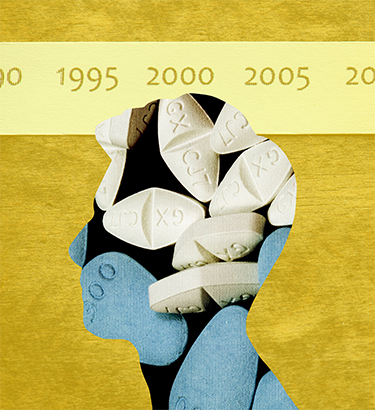"Having an infectious disease epidemic in 1983 in the United States was mind-boggling," explained Gerald Oppenheimer, M.A., Ph.D., a researcher and historian with firsthand knowledge of the early days of the global AIDS epidemic. "We were supposed to be in the postviral, postinfectious disease era, focusing on chronic disease, which was what we did. And so this was a totally unexpected epidemic."
A professor emeritus at the City University of New York School of Public Health, Oppenheimer has published extensively about the impact of AIDS on global health infrastructures, as well as the historical and ethical implications of public health practice and chronic disease epidemiology.
In the beginning, Oppenheimer said hospitals hid AIDS patients and prevented access to data from early diagnosis and treatment efforts.
"They were embarrassed by having AIDS patients," he explained. "They felt it would affect their attraction and that other patients wouldn't come, and that foundations would not support their special programs."
It may be difficult to understand the context surrounding those years. The magnitude of the fatalities that doctors and patients experienced is unfathomable to people today, even amid the COVID-19 pandemic. While more than twice the number of people have died of COVID-19, the sense of hopelessness around AIDS in the late 1980s was different from what we experienced with COVID-19.
A clinic with 500 AIDS patients in the '80s could expect to lose as many as 300 within six months of diagnosis.
"The drain of death in their offices was absolutely amazing," Oppenheimer said. "In the beginning, doctors knew nothing. So there was a growing interest, particularly among social scientists, by '85. And also, that was the time when two things of importance happened. There was more money…and the second thing…was that the epidemic had gone into a different kind of stage, a different paradigm. And that was with the discovery of the virus, HIV. Suddenly, this for scientists became a problem of viruses and not a problem of gay sex."
The discovery of HIV represented a massive shift in how doctors diagnosed, treated and researched the issue.
"It was now a prototype scientific problem, which any reputable scientist could now go into without having to answer too many questions about his or her own sexuality," Oppenheimer said.
Prior to the discovery of HIV, doctors had to tip-toe around the issue and operate in secret as they tried to stave off the death and suffering of their newly diagnosed AIDS patients. They were forced into a position of hospice care rather than disease treatment, due in part to the social stigma surrounding the condition they were attempting to combat.











